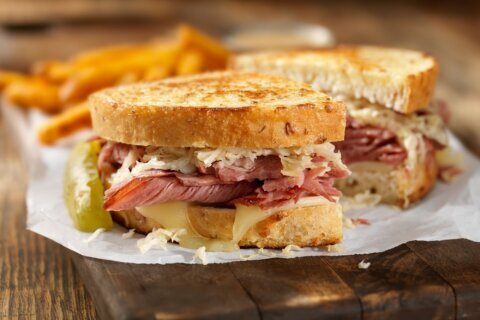I’ve changed my mind about fashion and hairstyles a zillion times over the years. But I’ve also changed my mind about nutrition, thanks to facts, not a whim. Here are six tips I used to dispense that no longer ring true:
1. Always grab a snack before dining out.
For years, I told my patients that if they eat something before they dine out, they’ll be less likely to dig in to the bread basket. But unfortunately, I found out that people like me who truly love bread will eat it no matter what — snack or no snack. So, why not save the calories from the snack and put it toward the bread? It all evens out in the end.
[See: 10 Healthful Snacks That Won’t Break the Calorie Bank.]
2. Don’t eat the egg yolk.
I’m not sure which came first: my love for poached eggs on avocado toast or the science supporting the health benefits of whole eggs, yolks included. Either way, I’m on board with the advice to eat whole eggs since yolk contains much of eggs’ nutrients, and can make meals more satisfying. There is one exception, though: I still recommend egg whites in omelets, especially if you like to add cheese. For the average person, three whole eggs plus cheese adds up to more calories than likely needed.
3. Choose white meat over dark meat.
The difference in calories and fat for white meat versus dark meat is minimal. So, my advice these days is to choose what you’ll enjoy more. If you never want to order a plain grilled chicken breast again, don’t! I know many of my patients are bored with the protein. Still, if you opt for dark meat, I suggest removing the skin since it packs more saturated fat, which may lead to cardiovascular disease.
[See: The 12 Best Heart-Healthy Diets.]
4. Buy nonfat yogurt.
I changed my mind on this outdated advice long ago since I find yogurt with some fat to be much more satiating. Once again, the difference in calories is minimal, so why not go with what tastes best? However, I’m still not ready to recommend full-fat yogurt, at least not to everyone. To determine who should eat full-fat yogurt, I look at his or her total diet. If someone eats mostly plant-based foods, for example, he or she can probably has room for some saturated fat from full-fat dairy. Meat eaters, on the other hand, are more likely already consuming enough.
5. Choose whole-wheat pasta over white pasta.
There’s a reason the U.S. Department of Agriculture advises making half — not all — of your grains whole: Refined grains are fortified, which means they have more B vitamins and iron. So, there really is no reason to feel guilty if you prefer white pasta (I know I do). Just make sure to enjoy it in the proper 1-cup serving size with lots of healthy toppings, such as veggies, beans and grilled shrimp. You can still get your whole grains from foods like oats, barley and quinoa.
[See: 12 ‘Unhealthy’ Foods With Health Benefits.]
6. Pass on the butter.
Now I say, “Pass the butter, please!” A little bit of fat never hurt anyone — “little” being the key word. For me, that means a pat or two on a baked potato or a teaspoon of butter when cooking couscous. Over the years, fat has become more in favor, and I can’t argue with the facts that it does help to satiate you, which probably results in eating less calories overall. Still, I’m more on board with eating mono and polyunsaturated fats versus saturated fat. So for now, I won’t go as far as adding butter to my coffee — at least not today.
More from U.S. News
7 Ways Grocery Shopping Will Change in 2017
7 Diet Mistakes Sabotaging Your Weight Loss
6 Common Nutrition Tips That Are No Longer True originally appeared on usnews.com







